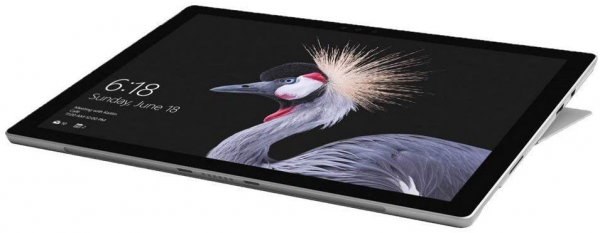Microsoft
Microsoft Surface Pro (2017): a very good 2-in-1, but still sold as a kit
Aprox. 949€
See specificationsNow well established on the market, Microsoft continues to offer its ultraportable machines to consumers. For this 2017 edition, the Surface Pro retains the logic used from the start of the range, while taking care to refresh its characteristics.
Our review
Presentation
As usual, Microsoft offers a 2-in-1 machine, which consists of a 12.3-inch (31.2 cm) tablet with a stand, as well as a keyboard to attach to the terminal with a clip magnetic. A keyboard which, as for the previous models, is sold separately at the price of 180 €. It will therefore be necessary to add this amount to the basic price to be able to use this Surface Pro 2017 for what it is: a laptop.
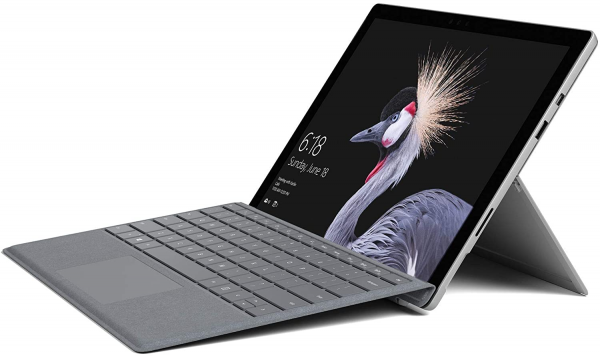
Construction
Microsoft is not reinventing the wheel with this Surface Pro, which looks more like an evolution of the Pro 4 than a new product. We always find the design specific to the machine, with its magnesium chassis and its foot allowing to tilt the tablet up to 150 °. The only visible difference, slightly more rounded edges, which the less attentive will not necessarily see.
In terms of handling, the Surface Pro 2017 therefore renews the qualities and defects of the previous model. It is for example complicated to use it on your knees with the keyboard connected, as the crutch, which fulfills its contract on a table, is not provided for that. Microsoft has abandoned the Surface Touch, keyboard with flat keys for several models, in favor of the Type Cover keyboard which is close to a classic chiclet. For this 2017 version, no major changes to note; Microsoft offers exactly the same model. It is possible, thanks to the magnets present in the keyboard, to place it in two positions relative to the tablet. In both cases, the typing is pleasant and controlled, with a stroke neither too short nor too long, without reaching the comfort of the classic chiclet keyboard of a laptop.
The real problem always remains the fact that Microsoft sells its keyboard separately, at an exorbitant price. Same observation for the stylus, sold separately by Microsoft at a price of 110 € and which has not changed since last year.
The screen looks exactly like the previous model, with its borders ranging from 1.2 to 1.4 cm depending on the sides. The connection has not changed either. The tablet is equipped with a USB 3.0 port, a microSD card reader, a proprietary sector port (the famous Surface Connect), a 3.5 mm jack and a mini Display Port. Note however the absence of a USB Type-C port on the tablet. This is probably the last time that Microsoft “forgot” this detail, since the new Surface Book 2 freshly picked up is equipped with a USB Type-C port; we can expect the same for the next Surface Pro.
Heating is better controlled than on previous models. As we can see in the images below, taken after one hour of activity from the Unigine Heaven benchmark, the heat is distributed evenly over the entire surface of the tablet. The temperature is around 40 ° C, with a peak at around 43 ° C at the rear.
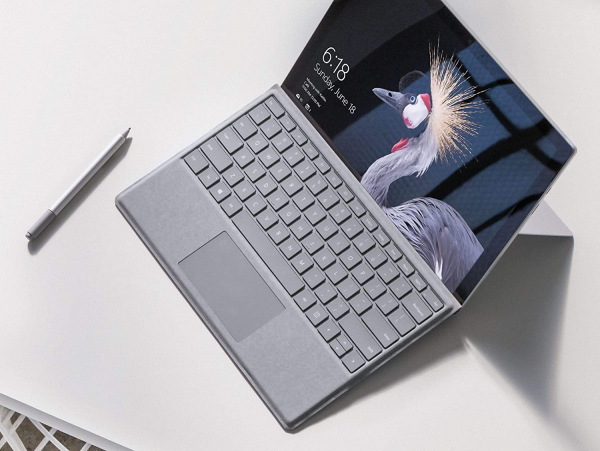
Screen
The screen of the Surface Pro 4 was already excellent; Microsoft has renewed it by further optimizing the settings on this new version. We therefore find the 12.3 inch (31.2 cm) IPS panel with a definition of 2,736 x 1,824 px with, specific to the machine, its 3: 2 format. delta color E = 2.5 gamma 2.3 temperature 6680 K
The screen displays a very good contrast ratio of 1,340: 1, as does the maximum brightness at 435 cd / m². In colorimetry, the result displayed is excellent, since the average delta E is 2.5 (as a reminder, quantifying the difference between the colors displayed and the ideal colors, it is considered to be very good below 3). Same thing for the average temperature which barely exceeds 6,680 K (the expected standard is 6,500 K) and therefore offers a controlled rendering, neither too hot nor too cold. The gamma curve is not very stable, but this remains a minor defect compared to the other strong points of the screen.
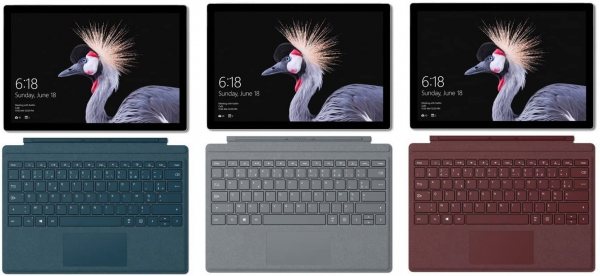
Performances
Logically, Microsoft has changed the characteristics of the machine to update them. If the 8th generation of Coffee Lake processors is obviously absent (the machine was announced before its arrival), the Surface Pro ships 7th generation processors (Kaby Lake).
The model we tested has an Intel Core i7-7660U processor; the Surface Pro 2017 is also available with a Core i5-7300U or a Core m3-7Y30. The RAM can range from 4 to 16 GB and the disk space (in SSD) varies between 128 GB or 1 TB depending on the configurations. Our test model is equipped with 8 GB of RAM and a 256 GB SSD.
It delivers a very good performance: its index rises to 123, which makes it one of the most powerful ultraportables on the market. The Surface Pro 2017 is thus at the top of the best machines on the market in terms of office automation and ensures constant fluidity. A user will be able to risk in advanced office automation, light video editing or photo editing without fear of seeing his machine toil.
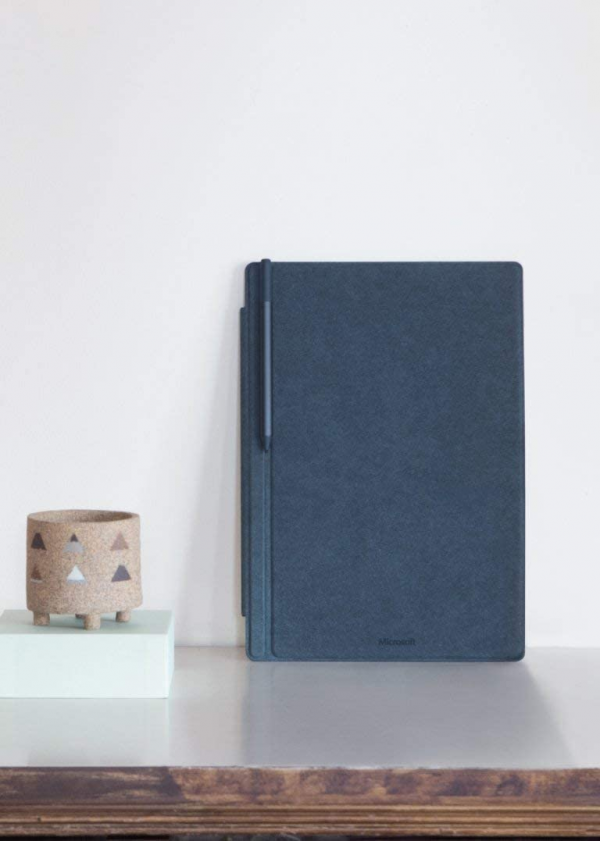
Games
In this section, our Surface Pro does no miracles. Equipped with an Intel Iris Plus 640 processor, the machine obtains a score of 29 on our test index. This places it in front of PCs equipped with Intel HD graphics cards, but obviously far behind machines equipped with dedicated graphics cards. The Surface Pro therefore does not spark in this area and allows you to only play games that consume very little resources.
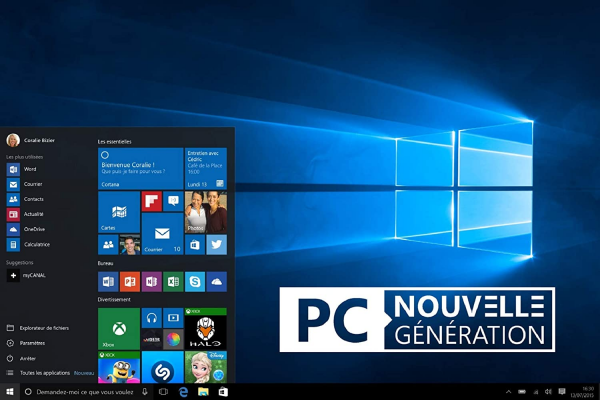
Mobility / Autonomy
It should be noted that this new version is lighter compared to the previous one: it displays 784 g on the scale (without the keyboard), which makes it a perfect product for mobility. The thickness remains identical, at 8.45 mm, which remains practical for transport. The Surface Pro 2017 is therefore a highly transportable machine. To this must be added a very practical charger (Microsoft's Surface Connect which allows charging via the magnetic port) and above all not very bulky, which contributes to this great mobility. The icing on the cake, the keyboard also serves as protection for the tablet.
On its official website, Microsoft promises up to 13.5 hours of autonomy in video playback. The reality is however very different, since in our usual test conditions (Netflix in Chrome, brightness set to 200 cd / m², headphones plugged in and backlight off), the Surface lasted 5.56 hours. It is already better than the previous version (3:47), but far from the market champions, such as the Specter X360 (8:57) or the Lenovo Yoga 910 (9:23). That said, for a 2-in-1 machine, the Surface Pro 2017 offers a very correct autonomy, but its 2,736 x 1,824 px screen is not surprisingly more greedy than a conventional Full HD screen, which explains this cons -performance.
Audio
Unsurprisingly, the Surface Pro 2017 speakers are mediocre, offering an unpleasant sound to the ear and especially unclear as soon as we show in the frequencies.
On the other hand, as far as the headphone output is concerned, it is quite the opposite: the audio is quite excellent, covering all the spectra of sounds. What compensate for a fairly average distortion of 1.3%.
Conclusion
The Surface Pro 5 (or 2017) is an excellent machine which, in addition to offering a high quality screen, ultraportability, very good autonomy and a design that is always as neat, offers truly convincing performance in its segment. Nevertheless, it should still be noted that despite all these qualities, the Surface Pro 2017 has a significant flaw: its price. Count at least € 950 for the tablet alone, the keyboard and stylus being sold separately at the respective prices of € 180 and € 110, or all from € 1,240. A policy that can only serve the product, especially since all the competitors in this segment offer a complete offer, keyboard and stylus included.
Specifications

